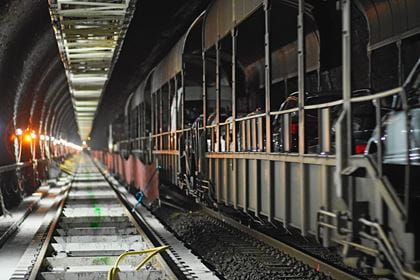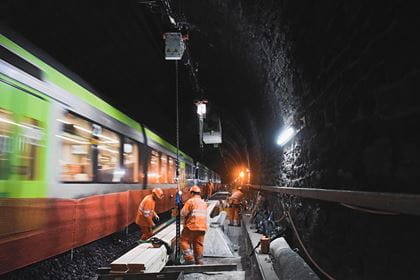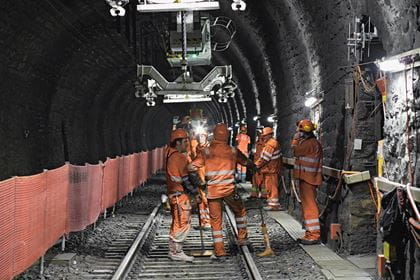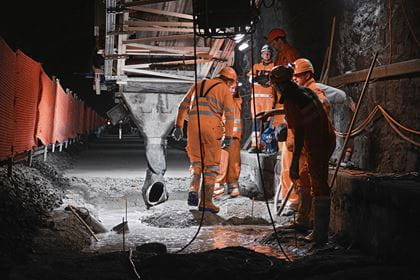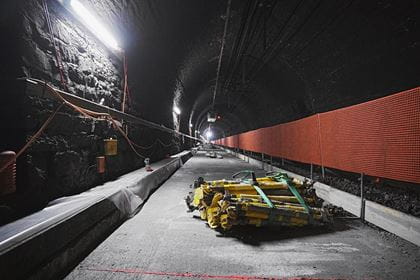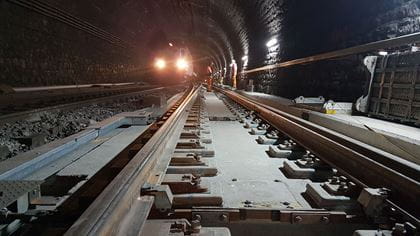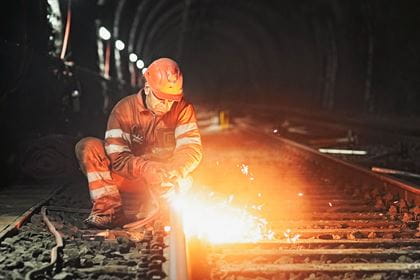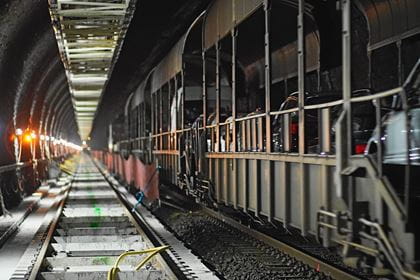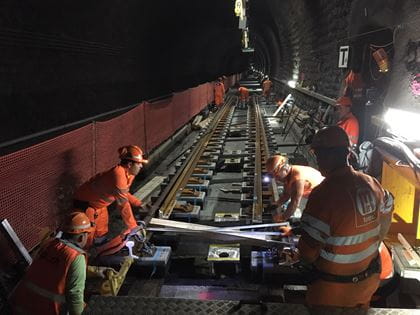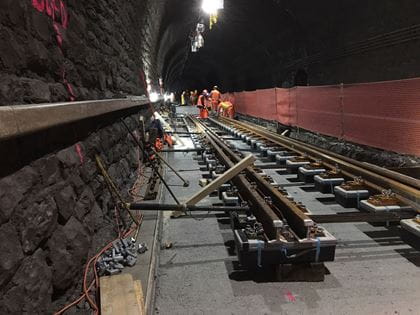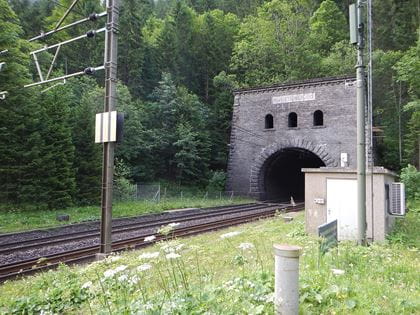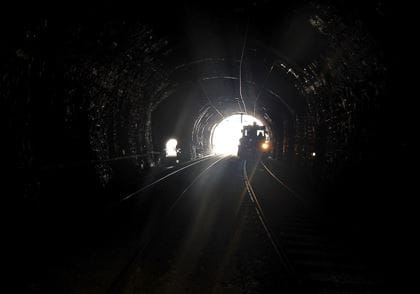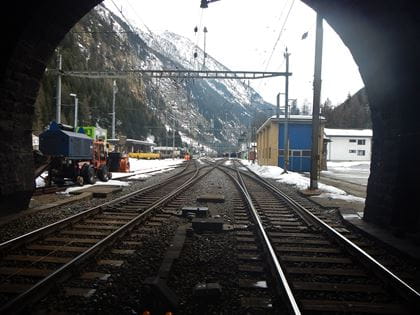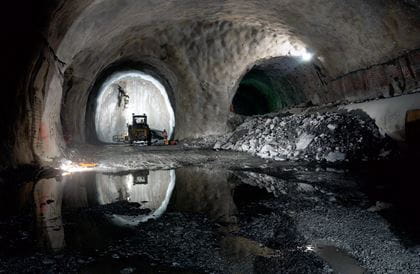New track in the Lötschberg Summit Tunnel
Investing in the future: The tracks in the Lötschberg Summit Tunnel were last replaced in the 1970s. BLS is now investing in a modern and sustainable track so that our customers can continue to travel safely and conveniently through the tunnel between Goppenstein and Kandersteg.
The old tracks in the Lötschberg Summit Tunnel will be removed, including the ballast and sleepers, and replaced with a so-called non-ballasted track. With a non-ballasted track, the rails are encased in a concrete foundation with elastically mounted individual blocks, as is already the case in the Lötschberg Base Tunnel. Ballast is no longer required. BLS is also modernising the tunnel’s drainage system. The tunnel vault is still in good condition, though.
To prevent railway operations from being too badly affected, BLS is carrying out the work in stages across several smaller sections.
Key data
- Start of construction: mid-2018
- Planned commissioning: end of 2024
What will the project achieve?
The non-ballasted track provides a series of benefits:
- Comfort: because the tracks are laid more precisely, there are fewer bumps. The ride will therefore be noticeably smoother.
- Service life: a normal ballasted track has a service life of around 40 years, whereas that of a non-ballasted track is around 60 years.
- Maintenance: a non-ballasted track has far lower maintenance costs, as it is much easier to keep in good condition. With a conventional track, the ballast needs to be replenished regularly in order to keep the tracks stable. This and other work will no longer be necessary.
Why is this tunnel called the Summit Tunnel?
For a long time, what is today the Lötschberg Summit Tunnel was simply called the Lötschberg Tunnel. The 14.6-kilometre-long tunnel was constructed between 1907 and 1913. Since BLS also took the Lötschberg Base Tunnel – situated deeper in the mountain – into operation in 2007, the older tunnel on the mountain line has been called the Lötschberg Summit Tunnel, as it sits below the mountain summit.
Why is the tunnel still needed following the construction of the Lötschberg Base Tunnel?
Together with the Lötschberg Base Tunnel, the Summit Tunnel forms a holistic system on the Lötschberg axis, which is situated on Europe’s most important rail freight corridor. Of the up to 110 freight trains that travel via the axis each day, between 20 to 50 of them travel the mountain line via the Summit Tunnel. The Summit Tunnel is also of vital importance to BLS’s Car Transport service. During peak times, up to 180 car trains travel through the tunnel, making it an important connection for passenger transport between Bern and Valais. Furthermore, BLS’s RegioExpress trains travelling between Bern, Brig and Domodossola use the Summit Tunnel each day.
Media releases
- 21.06.2023 BLS vergibt Sanierungsarbeiten im Südabschnitt des Lötschberg-Scheiteltunnels
- 13.12.2022 Mehr Autozüge am Lötschberg über die Feiertage und in der Wintersport-Saison
- 11.04.2022 Halbstundentakt nach Ostern
- 01.11.2021 BLS baut den Lötschberg-Scheiteltunnel durchgängig mit einer Betonfahrbahn aus
- 29.3.2021 Autozüge verkehren im Halbstundentakt
- 23.10.2020 BLS will Mehrkosten für Bauarbeiten im Lötschberg-Scheiteltunnel möglichst tief halten
- 09.04.2020 Bauarbeiten im Lötschberg-Scheiteltunnel werden bis auf Weiteres unterbrochen
- 10.12.2019 Über Festtage stündlich bis zu sieben Autozüge am Lötschberg
- 21.10.2019 BLS startet zweite Intensivbauphase im Lötschberg-Scheiteltunnel
- 15.04.2019 Bauarbeiten am Lötschberg: Autozüge verkehren im Halbstundentakt
- 12.12.2018 Über Festtage stündlich bis zu sieben Autozüge am Lötschberg
- 18.10.2018 BLS startet erste Intensivbauphase im Lötschberg-Scheiteltunnel
- 23.07.2018 BLS erneuert Fahrbahn im Lötschberg-Scheiteltunnel
